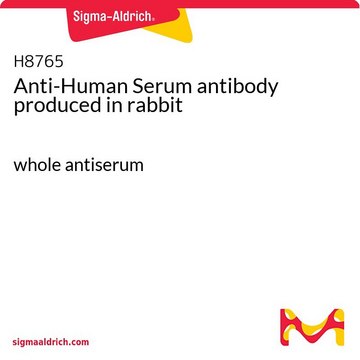Key Documents
D5545
DL-Dithiothreitol
BioXtra, ≥99.0% (titration)
Synonim(y):
threo-1,4-Dimercapto-2,3-butanediol, Cleland’s reagent, DTT
About This Item
Polecane produkty
linia produktu
BioXtra
Poziom jakości
Próba
≥99.0% (titration)
Postać
powder
przydatność reakcji
reagent type: reductant
zanieczyszczenia
Insoluble matter, passes filter test
≤0.3% 4,5-dihydroxy-1,2-dithiane
pH
4.0-6.0 (20-25 °C, 0.1 m in H2O)
mp
41-44 °C (lit.)
rozpuszczalność
H2O: 0.1 M, clear, colorless
ślady anionów
sulfate (SO42-): ≤0.005%
ślady kationów
Al: ≤0.0005%
As: ≤0.0001%
Ba: ≤0.0005%
Bi: ≤0.0005%
Ca: ≤0.001%
Cd: ≤0.0005%
Co: ≤0.0005%
Cr: ≤0.0005%
Cu: ≤0.0005%
Fe: ≤0.0005%
K: ≤0.005%
Li: ≤0.0005%
Mg: ≤0.0005%
Mn: ≤0.0005%
Mo: ≤0.0005%
Na: ≤0.1%
Ni: ≤0.0005%
Pb: ≤0.0005%
Sr: ≤0.0005%
Zn: ≤0.0005%
absorpcja
≤0.100 at 280 in H2O at 0.1 M
≤0.400 at 260 in H2O at 0.1 M
temp. przechowywania
2-8°C
ciąg SMILES
O[C@H](CS)[C@H](O)CS
InChI
1S/C4H10O2S2/c5-3(1-7)4(6)2-8/h3-8H,1-2H2/t3-,4-/m1/s1
Klucz InChI
VHJLVAABSRFDPM-QWWZWVQMSA-N
Szukasz podobnych produktów? Odwiedź Przewodnik dotyczący porównywania produktów
Zastosowanie
Hasło ostrzegawcze
Danger
Zwroty wskazujące rodzaj zagrożenia
Zwroty wskazujące środki ostrożności
Klasyfikacja zagrożeń
Acute Tox. 4 Oral - Eye Dam. 1 - Skin Irrit. 2
Kod klasy składowania
11 - Combustible Solids
Klasa zagrożenia wodnego (WGK)
WGK 2
Temperatura zapłonu (°F)
Not applicable
Temperatura zapłonu (°C)
Not applicable
Środki ochrony indywidualnej
dust mask type N95 (US), Eyeshields, Faceshields, Gloves
Wybierz jedną z najnowszych wersji:
Masz już ten produkt?
Dokumenty związane z niedawno zakupionymi produktami zostały zamieszczone w Bibliotece dokumentów.
Klienci oglądali również te produkty
Nasz zespół naukowców ma doświadczenie we wszystkich obszarach badań, w tym w naukach przyrodniczych, materiałoznawstwie, syntezie chemicznej, chromatografii, analityce i wielu innych dziedzinach.
Skontaktuj się z zespołem ds. pomocy technicznej






